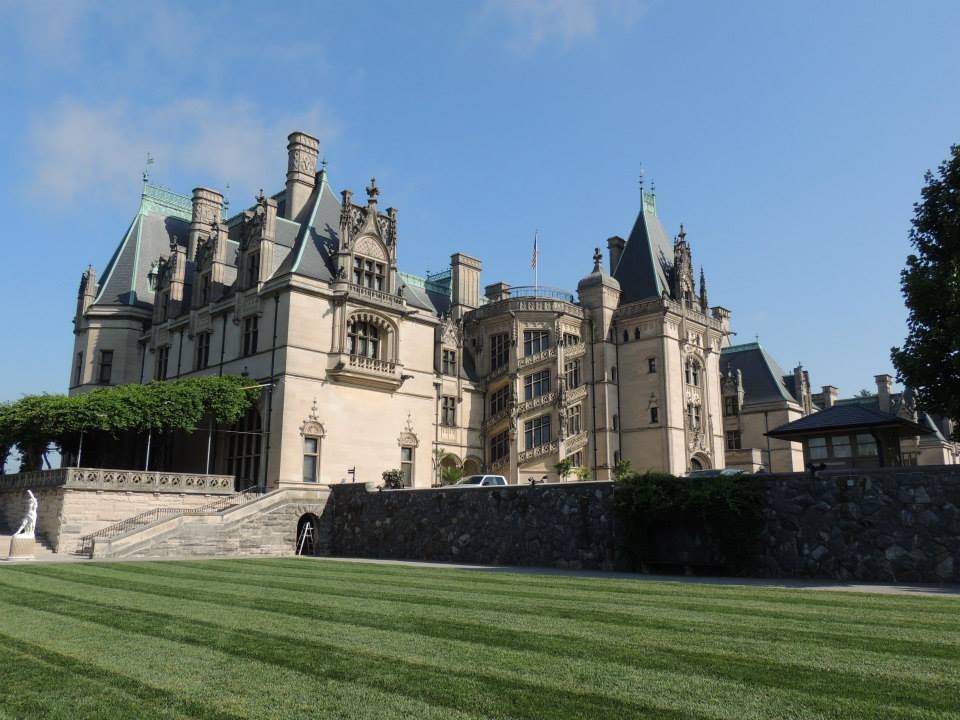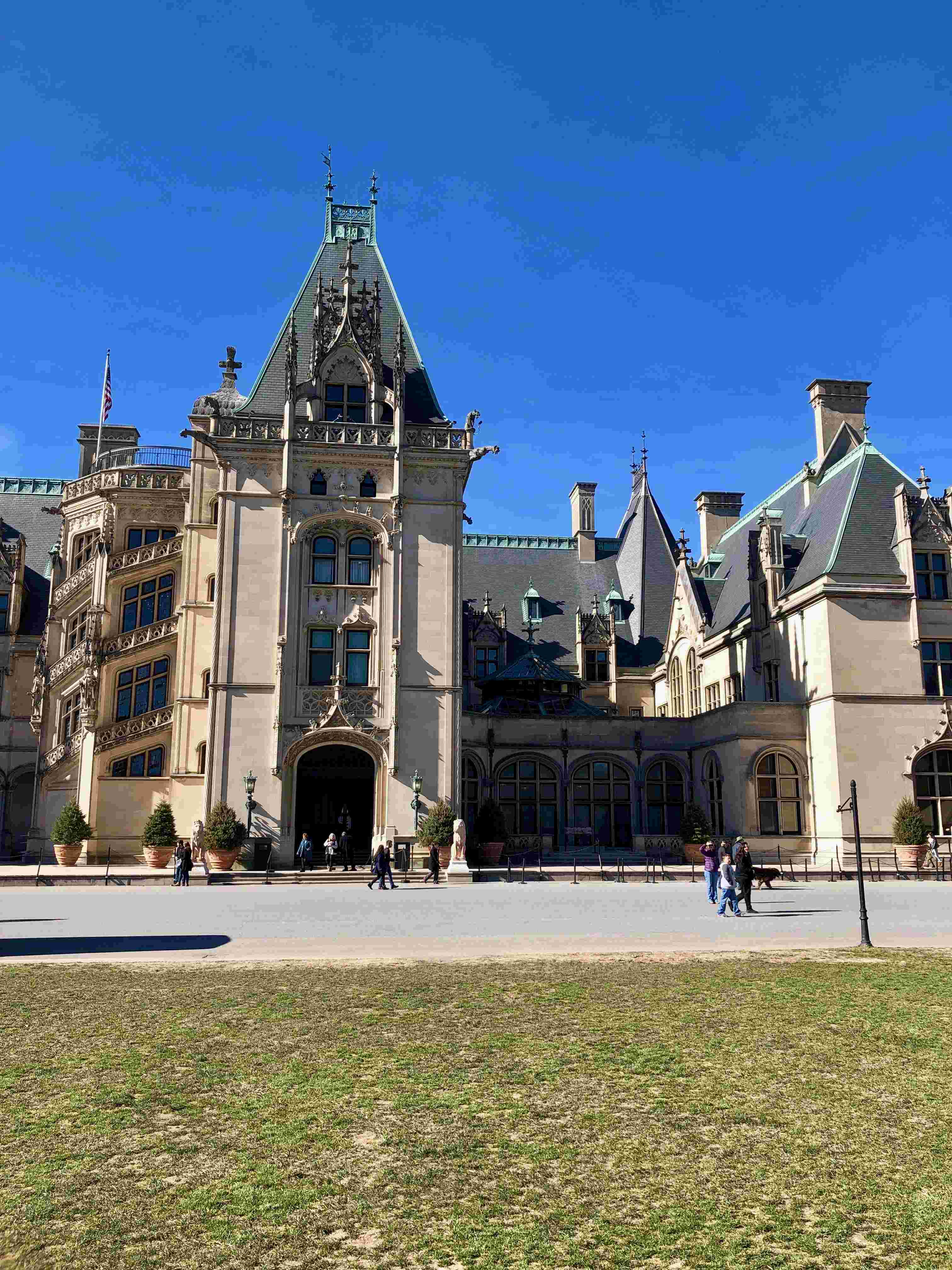Frederick Law Olmsted’s design for the Biltmore Estate is a testament to his genius in landscape architecture. The 8,000-acre estate, commissioned by George Vanderbilt in 1888, showcases Olmsted’s signature blend of naturalistic and formal elements. From the winding Approach Road to the meticulously planned gardens, Olmsted’s vision transformed the once-overused land into a breathtaking masterpiece that continues to captivate visitors today.
What Were Olmsted’s Key Design Elements for Biltmore Estate?

Olmsted’s design for Biltmore Estate incorporated several key elements:
- The Approach Road
- Diverse Plant Species
- Formal and Naturalistic Gardens
- Water Features
- Forest Management
The Approach Road
The three-mile Approach Road is a cornerstone of Olmsted’s design. It features:
- Winding path through the forest
- 10,000 rhododendrons
- Mountain laurels
- Native and Japanese andromedas
- Evergreens, river cane, and bamboo
This carefully crafted journey creates a sense of mystery and anticipation as visitors approach the mansion.
What Plant Species Did Olmsted Use at Biltmore?
Olmsted utilized a diverse range of plant species to create a rich and varied landscape:
- Hardy olives
- Evergreens with olive tints
- Junipers
- Red cedars
- Yews
- Low-growing plants along the brook and drive edges
Initially, some exotic plants like Oriental bittersweet, mahonia, and barberry were used. However, these have been replaced with non-invasive alternatives to maintain the original design intent while preserving the local ecosystem.
How Did Olmsted Structure the Gardens and Grounds?

Olmsted designed the estate’s gardens and grounds with a thoughtful progression:
- Formal gardens near the house
- Naturalistic and picturesque areas further away
- Hundreds of acres of gardens, terraces, and paths
- Water features
- A conservatory
This structure creates a seamless transition from the architectural grandeur of the mansion to the natural beauty of the surrounding landscape.
What Was the Historical Significance of Olmsted’s Work at Biltmore?
Olmsted’s work at Biltmore Estate holds significant historical importance:
| Year | Milestone |
|---|---|
| 1888 | Olmsted begins work on Biltmore Estate |
| 1889 | Construction of the house starts |
| 1890s | Establishment of the first model forest in the United States |
Olmsted’s vision for Biltmore was to create a private work of public interest, integrating both French and English landscape designs for the first time. His suggestion to use forestry as a way to revitalize the overused land led to the establishment of the first model forest in the United States, earning Western North Carolina the title “Cradle of American Forestry.”
How Has Olmsted’s Design Influenced the Overall Aesthetic and Functionality of Biltmore Estate?
Olmsted’s design principles have profoundly influenced Biltmore Estate’s aesthetic and functionality:
-
Sense of Mystery: The Approach Road builds excitement as visitors near the mansion, with no long-range views until the final reveal.
-
Pastoral and Picturesque Styles:
- Pastoral: Creates peaceful, broad spaces of greensward broken by groves of trees
-
Picturesque: Introduces complexity of light and shadow to heighten the mystery of nature
-
Integration with Architecture: The landscaping complements the mansion and other structures, creating a cohesive visual experience.
-
Functional Design: Olmsted’s design not only beautifies the estate but also serves practical purposes, such as forest management and erosion control.
What Practical Information Should Visitors Know About Biltmore Estate?
Tour Options and Accessibility
- Guided tours of gardens and grounds available
- Wheelchair-accessible paths in many areas
- Transportation services for those with mobility issues
Parking and Admission
- Parking facilities available on the estate
- Parking generally included in admission fee
- Admission fees vary by season and ticket type
Visitors should check the official Biltmore Estate website for current pricing, schedules, and accessibility information.
How Has Biltmore Estate Maintained Olmsted’s Vision Over Time?
Maintaining Olmsted’s vision at Biltmore Estate has been an ongoing process:
- Replacement of invasive plants with non-invasive alternatives
- Use of archival resources to understand Olmsted’s design philosophies
- Continuous efforts to balance historical accuracy with modern sustainability practices
- Adaptation to climate changes and evolving horticultural knowledge
The landscaping team at Biltmore Estate strives to preserve Olmsted’s original intent while addressing contemporary challenges and visitor needs.
Frederick Law Olmsted’s work at Biltmore Estate remains a shining example of landscape architecture. His vision transformed a vast expanse of land into a harmonious blend of natural beauty and human design, creating a legacy that continues to inspire and delight visitors more than a century later.
